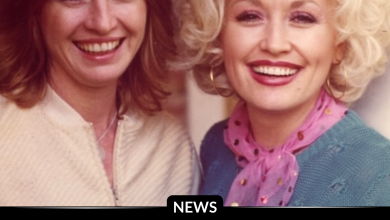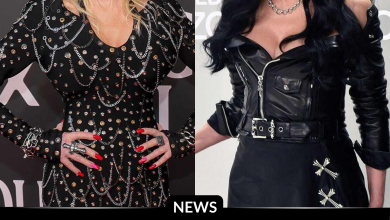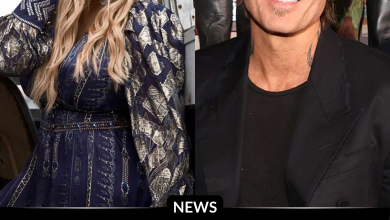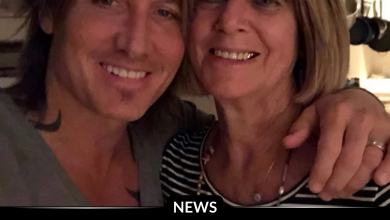The Wedding Dresses That Defined Audrey Hepburn—And the One That Never Made It Down the Aisle
OPINION: This article may contain commentary which reflects the author's opinion.
Audrey Hepburn, one of Hollywood’s most beloved and stylish icons, is known not only for her unforgettable film roles but also for her timeless fashion. Over the course of her life, Hepburn married twice and wore three remarkable wedding dresses, each reflecting her elegance, poise, and influence on bridal fashion. Among these gowns, one stands out—the dress that never made it down the aisle—offering a poignant glimpse into Hepburn’s personal life and her enduring legacy of kindness and generosity.
The Unworn Gown: A Symbol of a Lost Engagement
Hepburn’s first wedding dress, designed by Zoe Fontana in 1952, was intended for her engagement to British aristocrat James Hanson. The gown, a simple yet stunning mid-length silk dress with a boatneck collar, embodied Hepburn’s early style—refined and understated. Unfortunately, the engagement ended in 1953 when Hepburn realized that the pressures of her rising career in Hollywood and Hanson’s responsibilities in his family’s business would keep them apart. In a statement that highlighted her deep desire for a committed relationship, Hepburn famously said, “When I get married, I want to be really married,” signaling her decision to call off the engagement.
Rather than letting the dress go to waste, Hepburn demonstrated her characteristic generosity by donating it to a young Italian bride named Amiable Altobella. Altobella wore the dress to her farm wedding, and later reported that she had enjoyed a long and happy marriage, attributing some of her good fortune to the dress. This act of kindness reflects Hepburn’s compassionate nature, as she ensured that the dress, which could have symbolized a broken engagement, instead brought joy and luck to another couple. The gown was later auctioned in 2009 for £13,800, a testament to its continued cultural significance. It now resides with a private collector, preserving Hepburn’s legacy.
The Second Wedding Dress: A Secret Marriage to Mel Ferrer
Hepburn’s second wedding dress, designed by Pierre Balmain, was for her marriage to actor Mel Ferrer on September 25, 1954. The ceremony took place in Bürgenstock, Switzerland, and was kept so private that the press had little to no access. The dress itself was a tea-length, fit-and-flare gown with ballgown sleeves and a high collar, perfectly embodying the chic, mid-20th-century bridal aesthetic. Hepburn’s desire for privacy during this time was clear, as she went to great lengths to keep the details of the wedding away from public scrutiny. This gown, unlike her first, was a symbol of a more intimate and personal chapter in Hepburn’s life, reflecting her deep connection with Ferrer.
The Third Wedding Dress: A Nontraditional Choice for Andrea Dotti
For her second marriage, to Italian psychiatrist Andrea Dotti on January 18, 1969, Hepburn chose a more modern approach to bridal fashion. Designed by her longtime collaborator Hubert de Givenchy, the dress was a pale pink, long-sleeved, funnel-necked minidress paired with white tights, ballet flats, gloves, and a matching headscarf. This nontraditional choice reflected Hepburn’s ability to blend elegance with modernity, marking a departure from the more formal wedding dress styles of the time. The dress exemplified the 1960s trend of minidresses while remaining true to Hepburn’s chic and minimalist style.
Although this marriage ended in divorce in 1982, the dress remains an iconic symbol of Hepburn’s evolving style, bridging the gap between her more traditional roles and the modern woman she became. The gown continues to inspire designers and brides alike, cementing Hepburn’s influence on both fashion and bridal wear.
Broader Implications: Hepburn’s Generosity and Influence on Bridal Fashion
Audrey Hepburn’s approach to her wedding dresses, particularly her decision to donate the first gown, aligns with her well-known humanitarian ethos. She was committed to making beauty accessible, and this is reflected not only in her fashion choices but also in her actions. Her wedding dresses, from the Fontana silk gown to the Givenchy minidress, continue to inspire brides today, with many drawing from Hepburn’s elegance and grace when selecting their own wedding attire.
Hepburn’s influence on bridal fashion can still be seen in modern weddings, as her timeless style resonates with contemporary tastes. Her generosity, as demonstrated by her donation of the unworn gown, has also had a lasting impact, showing that kindness and selflessness were core elements of her character.
Conclusion: A Legacy of Love, Loss, and Generosity
The story of Audrey Hepburn’s wedding dresses is more than just a tale of fashion; it’s a reflection of her journey through love, loss, and personal growth. Each dress tells a different story, from the symbol of a broken engagement to the intimate choices made in her second and third marriages. The unworn gown, in particular, serves as a poignant reminder of Hepburn’s generosity and the enduring legacy of her kindness.
Her wedding dresses continue to influence bridal fashion, with each gown reflecting her timeless style and her personal commitment to living with grace, elegance, and generosity. As the gowns live on in private collections and cultural memory, they continue to represent not only the beauty of Audrey Hepburn but the depth of her character and her impact on fashion, film, and humanity.



